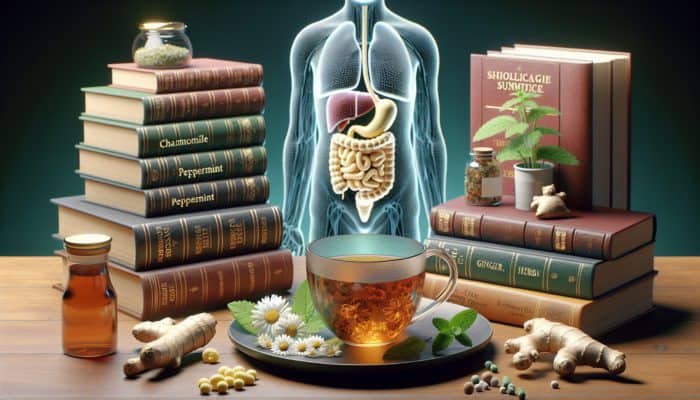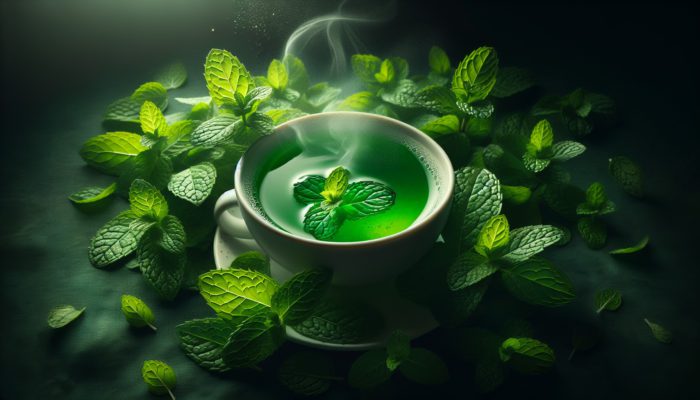Comprehensive Insights on Herbal Reactions and Their Implications for Consumers
Understanding Herbal Reactions: Essential Information for Consumers of Herbal Supplements
Gaining a thorough understanding of how to report herbal reactions is crucial for anyone who regularly consumes herbal supplements. Herbal reactions refer to a wide spectrum of adverse effects that may occur after the intake of these products. These reactions can vary from mild symptoms such as headaches and gastrointestinal distress to potentially life-threatening health crises that require immediate medical intervention. With the increasing popularity of herbal remedies in the United Kingdom, it is essential to understand the full range of these reactions. Many consumers mistakenly believe that herbal products are entirely safe, which can result in significant health risks. Educating oneself about possible side effects and interactions is vital for safe consumption and avoiding severe health complications.
Many individuals are now turning to herbal supplements, viewing them as a natural alternative to conventional medications. However, it is essential to understand that, similar to pharmaceutical drugs, herbal products can induce unexpected reactions within the body. The purity, potency, and preparation methods of these supplements significantly influence their safety profiles. For example, a product that is contaminated or improperly prepared can heighten the risk of adverse reactions. Therefore, it is crucial to educate oneself on the nature of herbal reactions to minimize risks associated with the use of herbal supplements.
Recognizing Common Types of Herbal Reactions for Enhanced Awareness
Having a solid understanding of the common types of herbal reactions is vital for anyone considering the use of herbal supplements. These reactions can typically be classified into three primary categories: allergic reactions, digestive disturbances, and interactions with other medications.
Allergic reactions may present themselves as skin rashes, hives, or respiratory issues, generally occurring shortly after ingesting herbal products. For instance, individuals with pollen allergies may experience adverse reactions to herbal formulations containing specific flowers or plants. Digestive disturbances are another frequently reported issue, which can range from mild nausea to severe gastrointestinal distress, including vomiting or diarrhoea. Certain herbs, particularly those with stimulating or laxative properties, can exacerbate these symptoms. Additionally, interactions with prescription medications pose a significant risk, potentially reducing the effectiveness of the medication or worsening side effects. A notable example is St John’s Wort, which is known to interact negatively with various antidepressants, potentially leading to serious conditions such as serotonin syndrome.
Being well-informed about these potential reactions is essential for early detection of issues, allowing for timely medical intervention. Keeping a detailed record of any symptoms experienced after taking herbal supplements can foster productive discussions with healthcare providers, ensuring that appropriate measures are taken to prioritize safety.
Recognizing When to Seek Medical Attention for Herbal Reactions
Understanding when to seek medical assistance after experiencing herbal reactions is crucial for safeguarding your health. If you encounter severe symptoms such as difficulty breathing, facial or throat swelling, or an elevated heart rate, it is imperative to seek immediate medical care. These signs may indicate a serious allergic reaction that can escalate rapidly and become life-threatening.
Moreover, if you experience persistent symptoms like severe abdominal pain, continuous vomiting, or any neuropsychiatric symptoms such as confusion or seizures, consulting a healthcare professional without delay is essential. Even milder reactions should not be overlooked; if a specific herbal supplement consistently leads to discomfort or intolerable side effects, it is wise to discontinue its use and discuss these experiences with your healthcare provider.
The saying “better safe than sorry” holds particularly true in the realm of herbal supplements, where the assumption of safety can lead to complacency. Taking prompt action not only supports your recovery but also contributes to the larger understanding of herbal safety. Reporting such incidents can help identify potentially dangerous products on the market, thereby enhancing consumer protection.
Key Factors Influencing the Severity of Herbal Reactions

Several factors can significantly affect the nature and severity of herbal reactions experienced by individuals. One major contributor is the dosage of the herbal product, as higher dosages tend to increase the likelihood of adverse effects, particularly for those who may be more sensitive to specific ingredients or have pre-existing health conditions. Understanding the appropriate dosage is essential, and consulting with a healthcare provider before beginning any new herbal regimen is highly recommended.
Individual health conditions also play a critical role in determining the likelihood of adverse reactions. For example, individuals with compromised immune systems, allergies, or chronic illnesses may be at an elevated risk of experiencing negative effects. Furthermore, the quality of the herbal product should not be overlooked; products that are contaminated or inadequately standardized can pose risks not only due to unexpected side effects but also because of the uncertain potency of active ingredients. Conducting thorough research into the source and quality of herbal products is vital for minimizing these risks.
Lastly, genetic factors can influence how an individual’s body metabolizes and responds to herbal compounds. Variations in liver enzyme activity, for instance, can affect how quickly and effectively the body processes certain herbs. Understanding these factors is crucial not only for safeguarding personal health but also for effectively managing the risks associated with herbal consumption.
Effective Strategies to Prevent Adverse Herbal Reactions
Preventing adverse herbal reactions starts with a comprehensive understanding of the herbs you are considering. Before using any herbal supplement, it is essential to conduct thorough research to inform yourself about the specific properties, potential side effects, and interactions associated with that herb. Consulting with a healthcare provider, particularly one with expertise in herbal medicine, can offer invaluable insights tailored to your unique health needs.
Beginning with low doses is another effective strategy for minimizing the risk of adverse reactions. This approach allows you to gauge how your body responds to a particular herb before committing to higher doses. Gradually increasing the dosage while monitoring for any adverse effects can significantly enhance safety.
Additionally, it is vital to remain vigilant regarding potential interactions with other medications or supplements you may be taking. Maintaining an up-to-date list of all medications and supplements can facilitate informed discussions with healthcare providers, ensuring that all aspects of your health are taken into account.
Ultimately, keeping open lines of communication with your healthcare provider throughout your herbal journey is essential. Regular check-ins can help identify any emerging concerns early on. Remember that prevention is the cornerstone of safe herbal consumption, and adopting a proactive approach lays the foundation for a healthier experience with herbal products.
Essential Steps for Effectively Reporting Herbal Reactions in the UK
Who Has the Authority to Report Herbal Reactions in the UK?

In the United Kingdom, anyone is eligible to report adverse reactions to herbal products, including patients, healthcare professionals, and caregivers. This inclusivity is crucial for ensuring comprehensive monitoring of the safety of herbal products. By contributing to the national database, individuals play a significant role in enhancing public health and safety concerning herbal supplements.
For patients, reporting their experiences cultivates a culture of transparency and awareness around the potential risks associated with herbal products. Healthcare professionals can provide expert insights into the nature and severity of reactions, promoting informed discussions about safety with their patients. Caregivers also act as advocates for those who may not be able to report their experiences themselves, ensuring that their loved ones’ incidents are documented and addressed.
Encouraging widespread reporting is essential for identifying adverse effects that may not be captured in clinical trials or standard safety assessments. It adds a layer of real-world data that can inform regulatory decisions and improve the safety of herbal products available to the public.
Steps to Effectively Submit a Report on Herbal Reactions
Submitting a report on herbal reactions to the Medicines and Healthcare products Regulatory Agency (MHRA) is a straightforward process that requires careful attention to detail to ensure its effectiveness. To begin, visit the MHRA website, where specific guidelines and online forms dedicated to reporting adverse reactions are readily available.
The first step in the process is to gather all necessary information about the product and the reaction experienced. This includes the product name, batch number, and a detailed description of the reaction, including the date it occurred and the dosage taken. Accurate and thorough reporting is crucial for the MHRA to track and enhance the safety of herbal products effectively.
Once you have compiled the required information, you can either complete the online form or contact the MHRA directly to report your experience. There are also options available for reporting via post if preferred. Following submission, you may receive follow-up communication from the MHRA to request further details, which underscores the importance of providing as much information as possible in your initial report.
Effective reporting not only enhances consumer safety but also contributes to a deeper understanding of how herbal products impact the population, ultimately leading to more informed regulations and safer products in the marketplace.
Essential Information Required for Reporting Herbal Reactions
When reporting herbal reactions, providing comprehensive information is crucial to ensure that the report is valuable for safety assessments. Essential details typically include the product name, batch number, and a clear description of the reaction experienced.
Specificity in your description is key; include details such as the symptoms experienced, the duration of the reaction, and any other medications or supplements taken simultaneously. This information allows healthcare professionals and regulators to assess the potential impact of the herbal product effectively.
Moreover, consider including any changes in your health status prior to taking the herbal supplement that could provide context to your experience. Providing details about your age, gender, and any pre-existing medical conditions can also be beneficial. By being thorough in your reporting, you contribute significant data that can aid in identifying patterns and risks associated with certain herbal products.
In summary, offering complete and detailed information not only enhances the quality of your report but also increases the likelihood of the MHRA taking prompt action to address safety concerns related to herbal products.
Expert Insights on Reporting Herbal Reactions
Case Studies of Documented Herbal Reactions
Real-world examples of reported herbal reactions serve as informative case studies that can help others understand the potential risks associated with herbal supplements. Such anecdotes are invaluable for both consumers and healthcare providers, shedding light on the various ways herbal products can affect individuals. For instance, several documented cases from the UK have highlighted adverse reactions, including:
- A 45-year-old woman developed severe skin rashes and intense itching after taking herbal supplements containing echinacea, which ultimately led to a diagnosis of contact dermatitis.
- A man in his 30s experienced gastrointestinal distress and abdominal cramps after consuming high doses of a herbal laxative, which he eventually discovered was contraindicated with other medications he was taking.
- A 60-year-old woman reported dizziness and palpitations after using St John’s Wort, which adversely interacted with her prescribed antidepressants.
- A 50-year-old man experienced anaphylaxis after ingesting ginseng for energy, leading to an emergency hospital visit.
These examples not only highlight the variety of reactions but also emphasize the importance of vigilance when using herbal supplements. Sharing these incidents can encourage more individuals to report their experiences, fostering a more comprehensive understanding of herbal safety. When people see the real-life implications of herbal reactions, they may feel more empowered to contribute their reports, ultimately enhancing public health.
Step-by-Step Guide to Effective Reporting
To enhance the quality and quantity of reports submitted regarding herbal reactions, it is crucial to provide clear, actionable steps. The following guidelines can simplify the process and make it more efficient for individuals wishing to report their experiences:
- Gather all pertinent information about the herbal product, including its name, batch number, and where it was purchased.
- Document your experience meticulously, noting the symptoms, their duration, and any other medications or supplements you are taking concurrently.
- Access the MHRA website for specific reporting guidelines and to locate the online reporting form.
- Submit your report through the recommended official channels, ensuring accuracy and completeness in all sections.
By breaking down the reporting process into these manageable steps, individuals can feel more confident in their ability to contribute to herbal safety. This structured approach not only facilitates individual reporting but also enhances the overall quality of the data collected, enabling regulatory bodies to act more efficiently on safety concerns.
Expert Evaluation on the Importance of Reporting
Expert analysis highlights the critical role that reporting adverse reactions plays in public health. Reports of herbal reactions serve as a vital feedback mechanism that helps regulatory bodies, such as the MHRA, identify trends and patterns related to herbal product safety. This information can lead to timely interventions that protect consumers and ensure that unsafe products are swiftly removed from the market.
Moreover, understanding the impact of reporting can motivate individuals to document and share their experiences. Key insights from UK experts indicate that:
- Consumer reports enhance the safety database, revealing long-term concerns that may not be apparent in short-term clinical trials.
- Identifying common adverse effects can lead to more effective labelling and clearer guidelines for herbal products, thereby enhancing consumer education and safety.
- Reports contribute to the development of more robust regulations, ensuring that herbal products meet safety standards that protect public health.
- Increased awareness of potential risks empowers healthcare providers to have informed discussions with patients about herbal supplement use.
The significance of reporting cannot be overstated, as it not only enhances individual safety but also plays a critical role in the broader landscape of herbal product regulation and consumer protection.
Legal and Regulatory Framework Surrounding Herbal Products
Key Legislation Governing Herbal Products in the UK
The legal landscape governing herbal products in the UK is shaped by a combination of European and domestic regulations designed to ensure consumer safety. The primary legislation includes the European Directive on Traditional Herbal Medicinal Products, which outlines the requirements for marketing herbal products safely and effectively. This directive mandates that herbal products must be well-documented, demonstrating their safety and efficacy based on historical use.
Additionally, the Medicines and Healthcare products Regulatory Agency (MHRA) plays a crucial role in overseeing the regulation of herbal medicines. They enforce strict guidelines regarding the manufacturing and marketing of herbal products, ensuring that they meet quality and safety standards. Understanding these laws is essential for both consumers and practitioners, as they highlight individual rights and responsibilities regarding the use of herbal products.
Furthermore, the UK also adheres to the General Product Safety Regulations, which require that all products marketed to consumers, including herbal supplements, must be safe for use. Non-compliance with these regulations can result in significant penalties for manufacturers and distributors, underscoring the importance of maintaining high standards within the herbal industry.
How Does the MHRA Ensure the Safety of Herbal Products?
The Medicines and Healthcare products Regulatory Agency (MHRA) employs a robust system for monitoring the safety of herbal products in the UK. This includes collecting data on adverse reactions reported by consumers, healthcare professionals, and manufacturers. The MHRA utilizes this data to identify patterns and potential safety concerns, allowing for timely actions to be taken, such as issuing warnings or recalling products that are found to be unsafe.
Through the Yellow Card scheme, the MHRA encourages individuals to report any adverse reactions they encounter with herbal products. This scheme serves as a crucial tool for gathering real-world data on herbal safety, which is often absent from clinical trials. By analyzing the reports submitted, the MHRA can evaluate the risk-to-benefit ratio of specific herbal products, facilitating informed decisions regarding their continued use in the market.
Additionally, the MHRA collaborates closely with international regulatory bodies to exchange data and best practices, thereby enhancing global safety standards for herbal products. This proactive approach not only safeguards public health in the UK but also contributes to the broader understanding of herbal medicine on a global scale.
Consequences of Non-Compliance with Herbal Regulations
Non-compliance with herbal product regulations in the UK can result in severe penalties, underscoring the importance of maintaining high safety standards. Manufacturers and distributors who fail to adhere to the guidelines set forth by the MHRA may face substantial fines, product recalls, and, in extreme cases, criminal prosecution. These penalties serve as a deterrent against negligence and ensure that companies prioritize consumer safety.
For instance, if a herbal product is found to contain harmful contaminants or is marketed without the necessary approval, the MHRA can issue a mandatory recall, requiring the company to remove the unsafe product from the market immediately. In addition to financial penalties, non-compliance can severely damage a company’s reputation, leading to a loss of consumer trust and market share.
Consumers also have the right to report any concerns about non-compliant products, further contributing to the oversight of the herbal industry. By remaining vigilant and informed, both manufacturers and consumers can help uphold the integrity of herbal medicine in the UK.
How Can Consumers Report Adverse Reactions to Herbal Products?
Consumers can report adverse reactions to herbal products through the Yellow Card scheme, an initiative run by the MHRA aimed at collecting data on the safety and efficacy of these products. This scheme allows individuals to communicate their experiences, thereby contributing to a growing database of information that helps ensure the safety of herbal products.
To report a reaction, consumers can visit the MHRA website, where they will find the necessary forms and guidelines for submitting their reports. It is essential to provide as much detail as possible, including the product name, batch number, and a comprehensive description of the reaction experienced.
Submitting reports through the Yellow Card scheme is crucial for identifying trends in adverse reactions that may not be apparent from clinical trials alone. By participating in this reporting process, consumers not only advocate for their safety but also contribute to a larger effort aimed at protecting public health and ensuring that herbal products are safe and effective.
Licensing Requirements for Herbal Practitioners in the UK
Herbal practitioners in the UK must adhere to specific licensing requirements to ensure that they practice legally and safely. These requirements often include holding a recognized qualification in herbal medicine, which typically involves completing an accredited training program that covers the principles of herbalism, pharmacology, and safety practices.
In addition to educational qualifications, many herbal practitioners choose to register with professional bodies, such as the National Institute of Medical Herbalists (NIMH) or the College of Phytotherapy (CPP). These organizations establish ethical and professional standards for practitioners, promoting safe practice and ensuring that consumers receive high-quality care.
Practitioners are also required to maintain adequate professional indemnity insurance and adhere to strict guidelines regarding patient confidentiality and informed consent. By complying with these licensing requirements, herbal practitioners contribute to a safer environment for both themselves and their clients, ensuring that herbal medicine is practiced ethically and responsibly.
The Critical Role of Reporting in Enhancing Herbal Safety
Impact of Reporting on Product Safety
Reporting herbal reactions plays a significant role in enhancing product safety, contributing to a comprehensive safety database that helps identify potential issues. Each report submitted provides valuable data that regulators can use to assess the safety of herbal products, leading to informed decisions regarding their continued availability in the market.
The cumulative effect of these reports can highlight trends in adverse reactions, allowing regulatory bodies to pinpoint high-risk products or ingredients. This insight is crucial for implementing necessary changes, such as modifying product formulations, enhancing labeling, or even withdrawing dangerous products from the market entirely.
Moreover, consumer reports can also motivate manufacturers to adopt more stringent quality control measures, as awareness of potential risks can drive brands to prioritize safety in their production processes. In this way, reporting not only protects individual consumers but also has the potential to uplift industry standards as a whole, thereby enhancing consumer safety and trust.
Utilization of Reports to Refine Regulations
The data collected from reported herbal reactions is instrumental in refining regulations and guidelines governing the herbal market. Regulatory bodies, such as the MHRA, analyze these reports to identify emerging safety concerns, leading to updates in the regulatory framework to address new risks.
For instance, if a specific herbal product consistently receives reports of adverse reactions, the MHRA can investigate further, potentially resulting in the imposition of stricter regulations on that product or its active ingredients. This ongoing process ensures that regulations remain effective and responsive to the realities of herbal supplement usage within the population.
Furthermore, reporting can also lead to the development of improved educational resources for consumers regarding the safe use of herbal products. By understanding the types of reactions that occur, regulatory bodies can disseminate targeted information to help consumers make informed choices, thereby promoting safer herbal consumption practices nationwide.
Can Reporting Result in Product Recalls?
Yes, reporting adverse reactions can indeed lead to product recalls if a product is identified as unsafe. When numerous reports indicate a concerning trend related to a specific herbal product, regulatory bodies such as the MHRA will investigate the situation further. If evidence suggests that a product poses a significant risk to consumers, a recall may be initiated to remove the product from the market.
Recalls serve as a crucial mechanism for protecting public health and maintaining the integrity of the herbal supplement market. They ensure that unsafe products are swiftly addressed, preventing further harm to consumers. Additionally, transparency surrounding recalls can foster consumer trust, as it demonstrates that regulatory bodies are vigilant in their oversight of herbal products.
Moreover, reporting reactions plays a crucial role in maintaining product safety, as it enables consumers to alert authorities to potential dangers. This collaborative effort between consumers and regulators is crucial for creating a safer environment for all individuals who use herbal products.
Reliable Methods for Reporting Herbal Reactions
Utilizing Official Reporting Channels for Maximum Effectiveness
Utilizing official reporting channels is imperative to ensure that your report reaches the appropriate authorities effectively. Submitting reports via established platforms guarantees that the information is processed by the relevant regulatory bodies, thereby enhancing the overall safety monitoring of herbal products. The following official channels are recommended for reporting herbal reactions in the UK:
- The MHRA Yellow Card Scheme is accessible online for easy submission.
- Contact the MHRA directly via their helpline for guidance on reporting procedures.
- Submission through healthcare providers who can assist in documenting and reporting reactions.
- Utilizing professional organizations that may offer additional support for reporting.
By leveraging these official channels, you ensure that your report is taken seriously and contributes to the larger body of data that informs safety assessments and regulatory actions. It is essential to follow the provided guidelines closely to ensure your report is accurate and comprehensive.
Keeping Detailed Records of Your Herbal Experience
Maintaining meticulous records of your experience with herbal products significantly enhances the quality of your report. Detailed documentation provides essential data for safety assessments and aids in understanding the full scope of any adverse reactions experienced.
Begin by noting the specific product details, including its name, batch number, and manufacturer, as well as the dosage taken. Document any symptoms experienced, their onset, duration, and severity. Additionally, consider including other medications or supplements used concurrently, as this information can be crucial for understanding potential interactions.
These records not only support your report but also serve as a valuable reference for discussions with healthcare providers. The more detailed and accurate your records, the more effective your communication will be, ultimately leading to better outcomes in addressing your concerns.
Engaging Healthcare Professionals for Guidance
Engaging with healthcare professionals can provide invaluable insights and support when reporting adverse reactions to herbal products. Whether it’s a general practitioner, a pharmacist, or a herbal medicine specialist, these experts can help you comprehend the nature of your reaction and its potential implications.
Their expertise can also enhance the accuracy and usefulness of your report. Healthcare providers are familiar with the reporting processes and can assist in gathering the necessary information, ensuring that your submission is thorough and effective. They can also help assess whether further medical intervention is needed based on your symptoms.
Moreover, collaborating with healthcare professionals promotes a joint approach to safety monitoring. By sharing your experiences, you contribute to their understanding of the implications of herbal products, which can aid in informing future patients and improving overall safety standards.
Timeliness of Reporting for Prompt Action
Reporting herbal reactions promptly is essential for ensuring that authorities can take swift action to assess and mitigate risks associated with the product. Timeliness is crucial when it comes to public safety, as delays in reporting can allow unsafe products to remain available on the market, potentially putting others at risk.
As soon as you experience adverse reactions after taking a herbal product, take the necessary steps to document your experience and submit your report. Immediate reporting enables regulatory bodies to respond promptly to emerging safety concerns, facilitating actions such as product recalls or consumer alerts.
By prioritizing prompt reporting, you contribute to a proactive approach to herbal safety. Your swift action not only aids in your recovery but also plays a role in protecting the broader community from potential harm.
Including All Relevant Product Information in Your Report
When reporting herbal reactions, it is imperative to include all relevant product details in your submission. Providing comprehensive information facilitates efficient tracking and evaluation of the safety of specific products.
Always ensure that you include the full name of the herbal product, along with its batch number and the manufacturer’s details. This information is crucial for regulators to identify potential issues related to specific products or ingredients.
In addition to this basic information, consider including any other pertinent details about the product’s formulation, such as active ingredients and dosage instructions. By being thorough in your report, you help create a clearer picture of the circumstances surrounding your adverse reaction, ultimately contributing to improved safety assessments.
Resources and Support for Reporting Herbal Reactions
Where to Access Reporting Forms
Reporting forms for herbal reactions are readily available on the MHRA website, which serves as the primary resource for consumers wishing to report adverse experiences. Navigating the site is straightforward, and users can easily locate the section dedicated to reporting through the Yellow Card scheme.
Healthcare providers also often have access to reporting forms and can assist individuals in completing them. Many practitioners are familiar with the reporting process and can offer guidance on how to document and submit reports effectively.
It’s crucial to use the correct forms for your submissions to ensure that your report is processed without delays. By accessing these resources, you take the first step in making your voice heard and contributing to the safety monitoring of herbal products in the UK.
Support Options Available for Individuals Reporting Reactions
Numerous support resources are available for individuals wishing to report adverse reactions to herbal products. The MHRA provides helplines and online resources that offer guidance on the reporting process, making it easier for individuals to navigate their experiences.
Additionally, healthcare professionals can offer valuable support, helping to clarify symptoms and assist in documenting experiences. Many practitioners are well-versed in the reporting process and can provide insights that enhance the quality of your report.
Furthermore, various consumer advocacy groups and organizations focused on herbal safety may provide resources and support for individuals, ensuring that their experiences are adequately represented. By leveraging these resources, you can streamline and enhance the reporting process.
How to Stay Informed About Herbal Safety Matters
Staying informed about the safety of herbal products is an ongoing responsibility for consumers. Regularly checking updates from the MHRA, as well as reputable herbal health websites, can help keep you informed about new research, safety alerts, and recalls related to herbal products.
Subscribing to newsletters from professional organizations or consumer advocacy groups focused on herbal safety can also provide timely information. These resources often provide insights into safe practices, emerging issues, and regulatory changes that may impact your use of herbal supplements.
Additionally, participating in forums or discussions about herbal medicine can provide community support and shared knowledge. Engaging with others who share similar interests can enhance your understanding of safe herbal practices and keep you connected to the latest developments in the field.
Understanding Reporting Deadlines for Herbal Reactions
Deadlines for reporting adverse reactions to herbal products can vary depending on the nature of the incident. Generally, it is advisable to report any adverse reactions as soon as they occur to ensure timely submission and action by regulatory authorities.
While the MHRA encourages prompt reporting, they do not typically impose strict deadlines for submission. However, being proactive in reporting is essential, as it allows authorities to address safety concerns quickly.
Consulting the MHRA guidelines for specific reporting timelines can provide additional clarity, ensuring that your submissions are timely and contribute to ongoing safety monitoring. By staying informed and ready to report, you play an active role in promoting the safety of herbal products in the UK.
Frequently Asked Questions (FAQs) Related to Herbal Reactions
What Are the Most Common Herbal Reactions Reported?
Common herbal reactions include allergic responses, gastrointestinal disturbances, and interactions with medications. Symptoms can range from mild discomfort to severe health issues, emphasizing the critical importance of awareness and caution when using herbal supplements.
How Can I Prevent Experiencing Herbal Reactions?
Preventing herbal reactions involves thorough research on products, starting with low doses, consulting with healthcare professionals, and being mindful of potential interactions with other medications. Awareness is paramount for safe consumption practices.
To Whom Should I Report Herbal Reactions?
Herbal reactions should be reported to the Medicines and Healthcare products Regulatory Agency (MHRA) through their Yellow Card scheme. This ensures that your experience contributes to the safety monitoring of herbal products.
What Key Information Is Necessary for Reporting?
To report a reaction, include the product name, batch number, dosage taken, and a detailed description of the reaction experienced. Comprehensive information facilitates effective assessment and informed action.
How Are Herbal Reactions Monitored in the UK?
The MHRA monitors adverse reactions to herbal products through reports collected from consumers and healthcare professionals via the Yellow Card scheme. This data is vital for identifying safety concerns and enhancing product regulations.
Can I Report on Behalf of Another Individual?
Yes, caregivers and healthcare professionals can report adverse reactions to herbal products on behalf of others. Providing accurate information is essential for effective monitoring and assessment.
What Happens After I Submit a Report?
After submission, the MHRA reviews the report to assess potential safety issues. They may contact you for additional details if necessary. Your report contributes to the overall understanding of the safety of herbal products.
Are There Penalties for Herbal Product Manufacturers Who Fail to Comply?
Yes, manufacturers may face penalties, including fines and product recalls, for failing to comply with safety regulations. Adherence to guidelines is crucial for maintaining consumer trust and safety.
How Does Reporting Contribute to the Improvement of Herbal Safety?
Reporting adverse reactions aids in identifying trends and potential safety concerns, enabling regulatory bodies to take action, refine guidelines, and enhance the overall safety of herbal products.
Is It Possible to Remain Anonymous When Reporting?
Yes, individuals can choose to report anonymously through the Yellow Card scheme. However, providing contact information may facilitate follow-up inquiries for further clarification.
Connect with us on Facebook for more updates!
The Article: How to Report Herbal Reactions: UK Guide first appeared on https://mcrtherapies.co.uk
The Article Report Herbal Reactions: A Guide for the UK Was Found On https://limitsofstrategy.com


























